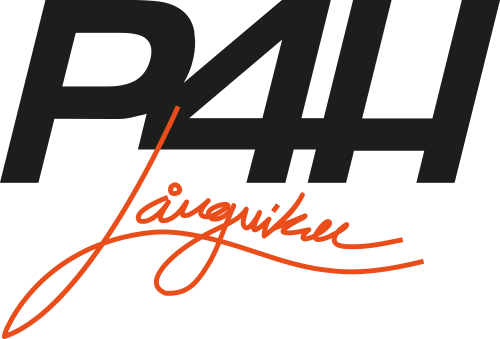This might be an unbarred accessibility article delivered underneath the Creative Commons Attribution Permit, and therefore it permits unrestricted low-industrial explore, shipping, and you can reproduction in almost any medium, given the original work is safely quoted.
Aim
To compare An excellent allele wavelengths of 845G>A beneficial mutation out of ten Slavic populations within the main, east, and you will southern area Europe ranging from each other sufficient reason for almost every other European populations.
Strategies
This new 845G>A mutation throughout the DNA of eight hundred Polish neonates obtained from inside the 2005-2006 are examined because of the polymerase chain effect-maximum fragment size polymorphism. The content was basically compared with profile off their places.
Results
We identified 381 GG homozygotes, 18 GA heterozygotes, and 1 AA homozygote. The 845A allele frequency was 2.5%, which makes the summary figure for Poland from this and previous studies 3.5%. The average prevalence for Poland and other West Slavic countries was 3.6%, similar to Russia (inhabited by the East Slavs, 3.5%). The average prevalence in South Slavic countries was 2.2%, gradually decreasing from 3.6% in Slovenia to 0% in Bulgaria, with a longitudinal linear gradient (adjusted R 2 = 0.976, P < 0.001).
Results
South-west and you will Eastern Slavs, in addition to Finland, Estonia, Germany, Austria, Hungary, Slovenia, and you can Croatia, mode a group which have 845A allele wavelengths ranging from step three% and you may 4%. About Southern Slavs, you will find a slow decline in the newest frequency off 845A allele out of northwest in order to the southern area of, which have a surprisingly specific eastern-western linear gradient.
For the 1996, a couple of major HFE gene mutations (845G>A good and you can 187C>G) guilty of a genetic sorts of hemochromatosis was basically recognized (1). Hereditary hemochromatosis is a common autosomal recessive problems characterized by increased iron assimilation. It has got tall medical effects such as for example the liver cirrhosis, diabetic issues mellitus, arthropathy, cardiomyopathy, and you can hormonal dysfunction (2). All in all, 60% so you’re able to 96% out-of clients with hemochromatosis during the Europe feel the mutation 845G>An excellent during the exon 4. This leads to cysteine to tyrosine substitution in the reputation 282 (C282Y) of one’s polypeptide strings, resulting in destabilization of just one of your connecting sulfide molecules disrupting HFE joining to help you ?2-macroglobulin (step 1,3). This new HFE polypeptide chain seems to lose being able to bind to help you transferrin receptor, which causes an effective 200-300% rise in iron intake out of eating. The severity of periods within the homozygotes was variable and you can utilizes the new battle, age, sex, and you can eating plan (2,4,5). Merryweather-Clarke ainsi que al (6) stated the best prevalence from 845A HFE for the northwestern Europe (5.2 to help you ten.1%), internet explorer, Sweden, Norway, British, and you can Ireland. During the Finland, Hungary, Poland, Russia, Austria, Germany, Czech Republic, and you can Slovakia the brand new incidence is between 3.2 and you will cuatro%. Into the southern Europe (Greece, Romania, Italy, and you can The country of spain), new prevalence is very reduced (6-18) plus Chicken it is almost low-existent (7). According to newer study, France (six.1%) may now be added to the fresh northwestern classification (19,20). As major analysis of your incidence ranging from European countries by the Merryweather-Clarke et al (6) included couple analysis to your Slavic populations, we further reviewed the fresh new 845A HFE volume from the Polish populace and you may kvinnor Asien opposed it with other Slavic communities and you may in past times wrote show, and computed their delivery over the whole European countries.
Content and methods
The study sample comprised 400 consecutively born neonates (187 female and 312 male) delivered at the Neonatology Department, Pomeranian Medical University, Szczecin, Poland in 2005-2006. All neonates were of Polish origin, with Polish grandparents, and informed consent was obtained from all parents. The Ethical Committee of the Pomeranian Medical University approved the protocol of the study (BN- ). Genomic DNA from neonates was extracted from 100 ?L of umbilical cord blood using the QIAamp DNA Blood Mini Kit (QIAGEN, Hilden, Germany). For identification of the 845G>A HFE mutation, we used polymerase chain reaction (PCR)-restriction fragment length polymorphism. About 20 ng of genomic DNA was used with a PCR mixture (10 ?L) containing 10 ? buffer (pH 8.3, 1.5 mM MgCl2), 0.2 mM each of the deoxynucleoide triphosphates, 0.5 U Polymerase Taq (MBI Fermentas, Vilnius, Lithuania), and 4 pmol each of the forward and reverse primers. 5?- CCT CAT CCT TCC TCT TTC CT-3` was used as a forward primer and 5?- TCC TCA GGC ACT CCT CTC AA-3` as a reverse primer (TIB MOL BIOL, Poznan, Poland). PCRs were performed in a Mastercycler Gradient thermal cycler (Eppendorf, Hamburg, Germany), with the following temperature profiles: initial denaturation at 94°C for 5 minutes, 37 cycles of 20 seconds at 94°C, 40 seconds at 54°C, and 40 seconds at 72°C; with a final extension step at 72°C for 8 minutes. Amplification was followed by digestion of the 367 bp product using the RsaI restriction enzyme (5?-GTvAC-3?) (MBI Fermentas) for 3.5 hours at 37°C. PCR digestion products were separated on 3% agarose gels, stained with ethidium bromide, and recorded using a DS-34 Polaroid Instant Camera (Polaroid, Dreieich, Germany) under UV light (Transilluminator 4000, Stratagene, La Jolla, CA, USA). The RsaI digestion yields fragments of 225 and 142 bp for G845 homozygotes; 225, 142, 113, and 29 bp for heterozygotes; or 225, 113, and 29 bp for 845A homozygotes. Genotypes of GA and AA patients were also confirmed by DNA sequencing (3100-Avant Genetic Analyzer, Applied Biosystems Hitachi, Foster City, CA, USA).
